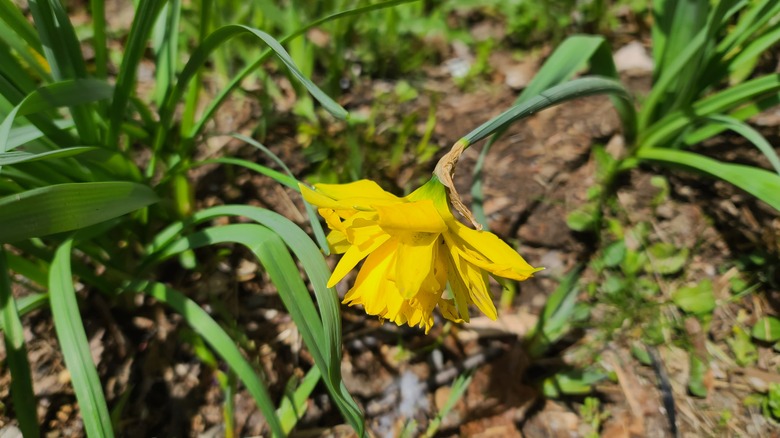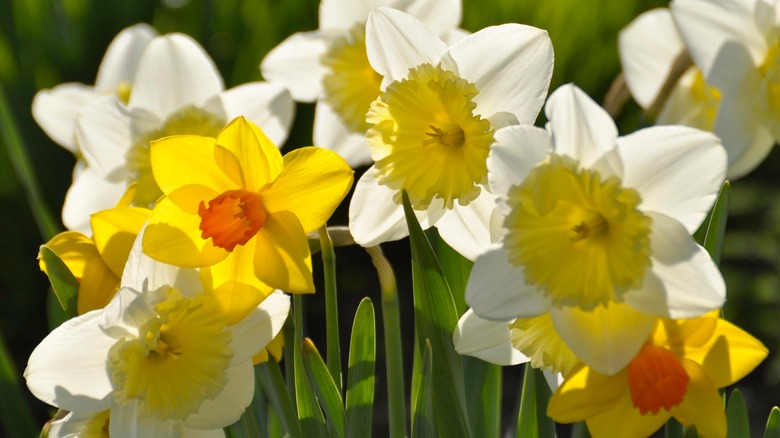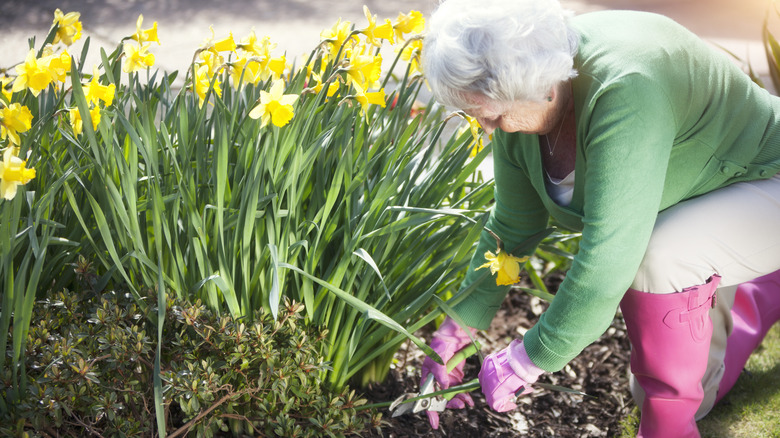The Crucial Spring Tip That Keeps Your Daffodils Blooming All Season Long
Daffodils can be a great addition to any yard and offer a beautiful appearance, clearly indicating spring is underway with their blooms. Unfortunately, daffodils may not last the entire season if the blooms begin to fall over. If the stem of a daffodil is long, you may find that the bloom begins to bend as it grows. Tall varieties of daffodils can be particularly difficult to deal with, and you may notice that they have trouble staying upright. This is common and tends to happen because the flower becomes too heavy for the stem to support the weight properly. However, things can worsen when it rains or if there has been considerable stretching due to heat and sunlight.
Rain can cause more weight to be added to the blooms and make bending even more likely. This may not offer the aesthetic appeal you were hoping for. In addition to avoiding the mistakes everyone makes when planting daffodils, you should consider adding some extra support for your daffodils. Doing so can help prevent drooping and keep them upright throughout the spring season.
Giving your daffodils extra support
It's a good idea to add some stakes to your garden to prevent your daffodils from drooping and potentially dying. Placing a stake along a group of daffodils can help to keep the stems upright. It's best to use short ring stakes or another type of stake that is easy to bend and offers some flexibility. You can then keep the stake stable by placing one end into the soil. Consider grabbing a pruned stem from an apple tree, pear tree, or another fruit tree. These stems can work well for this purpose.
As an alternative, you can create a boundary around daffodils by wrapping bamboo stakes with twine. Place them around bloom groups that are bending to provide extra support. When placing stakes, it's best to do it as a preventative measure before you notice issues. Placing them after your daffodils have begun to droop and trying to get the flowers upright again can be tricky.
In addition to using stakes, adding more mulch can also help protect daffodils. The truth about gardening mulch is that it can do a great job of helping prevent weeds, but it can do even more than this. With enough extra mulch, you can add more depth and stability to the daffodils, making it easier for them to stand upright. However, when doing this, be careful and don't accidentally kill nearby plants in the process.
Planting daffodils correctly from the beginning
To prevent issues with large flowers causing stems to flop over, it's best to plant daffodils correctly in the first place. Start by learning everything you need to know before planting them. Generally, daffodils need to be planted 6-8 inches deep in the ground. It's a good idea to get the spacing right as well. Daffodils need to be spaced 6 inches apart to grow properly.
Daffodils also need a lot of water and should get at least six full hours of bright sunlight per day. It's also a good idea to add fertilizer to daffodils as well. If you don't want to deal with the potential headaches of bent blooms, consider opting for shorter varieties of daffodils rather than ones that tend to grow long stems. Shorter daffodils will be a bit lower maintenance but will still have a great look. If you notice that a daffodil has fallen over due to rain or a heavy flower, you may want to consider using these blooms as cut flowers. Daffodils can look amazing in a vase and add a spark of interest anywhere you place them.


